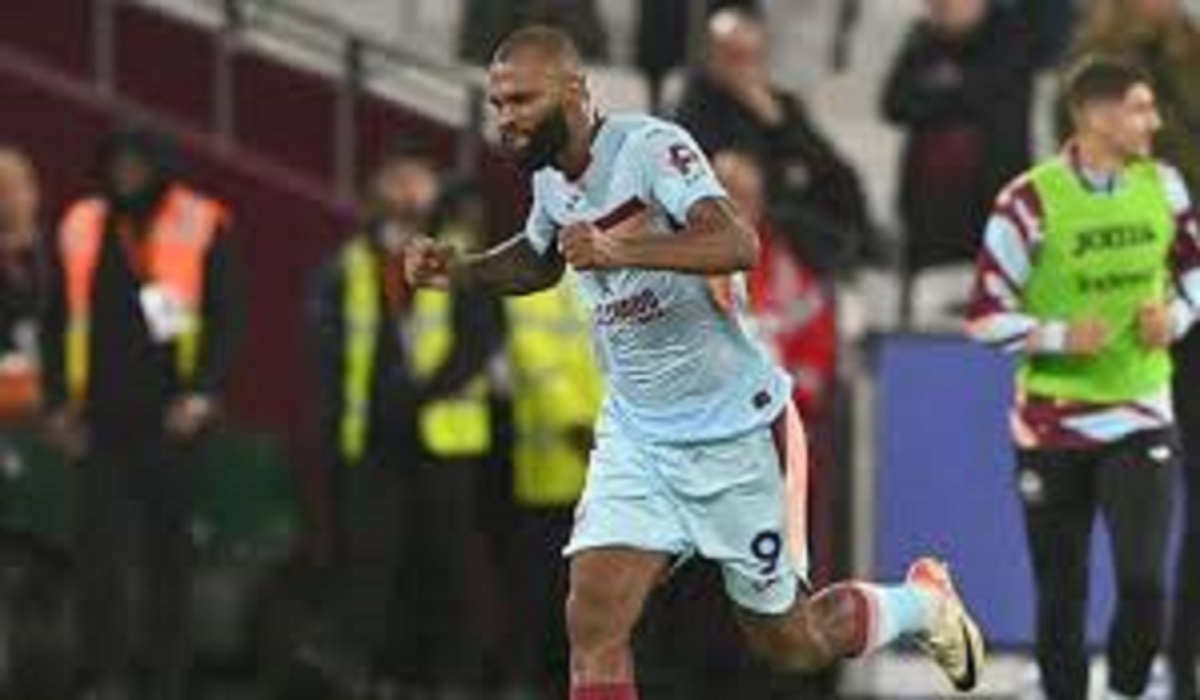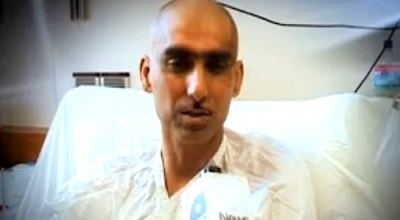Psychology of Athletic Flow State Triggers
Psychology of Athletic Flow State Triggers: Imagine a moment in sports where everything feels perfect. A basketball player doesn’t see the roaring crowd; they only see the hoop, and every shot arcs perfectly through the net.
A marathon runner feels a powerful rhythm, their body moving efficiently as the miles pass by. In these moments, the athlete is in a special zone. This zone has a name. We are talking about the psychology of athletic flow state triggers.
This mental state is not magic. It is a real experience that science can explain. Understanding the psychology of athletic flow state triggers can help any performer, from a weekend runner to a professional player.
This article will walk you through what this flow state is, the conditions that create it, and the latest findings on how to make it happen more often. We will provide a clear look at the psychology of athletic flow state triggers so you can apply these ideas to your own activities.
What Exactly is an Athletic Flow State?
An athletic flow state, often called “being in the zone,” is a frame of mind where a person is fully absorbed in an activity. They feel a strong sense of focus and involvement. Action and awareness seem to blend together. The athlete stops thinking about themselves as separate from the sport. Time may seem to slow down or speed up.
Every movement, thought, and intention follows the last one in a smooth, effortless flow. The inner voice that doubts or criticizes becomes quiet. This concept is a central part of the psychology of athletic flow state triggers. It is the target condition that athletes and coaches want to reach.
This state was first named and studied by a psychologist named Mihaly Csikszentmihalyi. He described flow as the secret to happiness and high performance. In sports, this means a runner might feel like their legs are moving on their own, or a tennis player might feel they can anticipate where the ball will go before it even leaves their opponent’s racket.
The latest research into the psychology of athletic flow state triggers shows that this is more than just a feeling. It is a measurable brain state. During flow, brain activity changes in ways that reduce mental clutter and increase efficiency. This allows for incredible physical performance without conscious effort.
- Total Involvement: The activity completely captures your attention. You aren’t thinking about your grocery list or what you’ll do after the game.
- Loss of Self-Consciousness: You are not worried about how you look or what others think. You are one with the activity.
- A Sense of Control: You feel a personal command over the situation and your performance, without actively trying to control it.
- Clear Goals and Feedback: You know exactly what you need to do (score a goal, hit a target) and you get immediate feedback on how you’re doing (the ball goes in, you hear the crowd cheer).
The Essential Conditions for Reaching a Flow State
You cannot simply decide to enter a flow state. It is not a switch you can flip. Instead, it arises when the right conditions are present. Think of these conditions as a recipe. When you mix the right ingredients together, the flow state has a good chance to appear.
The psychology of athletic flow state triggers is largely about setting up these conditions correctly. It is about creating an environment, both inside your mind and in your surroundings, that is friendly to flow.
The most important ingredient is a balance between the challenge of the task and your skill level. If the challenge is too high for your skills, you will feel anxious and worried. If your skills are too high for the challenge, you will feel bored and uninterested. Flow exists in the narrow channel between anxiety and boredom.
For example, a beginner snowboarder would not find flow on an expert-level slope; they would be terrified. That same expert would be bored on a beginner hill. The latest models in the psychology of athletic flow state triggers emphasize that this challenge-skill balance is the foundation. Without it, the other conditions are much harder to achieve.
Other critical conditions include having clear goals every step of the way. In a soccer match, your goal might be to maintain possession of the ball until a passing lane opens up. You also need immediate feedback. You can see if your pass reached your teammate or if it was intercepted. This clear cause-and-effect keeps your mind locked on the present task.
Finally, the activity itself must have a sense of being worthwhile. You need to care about the game, the race, or the practice. This personal investment is a powerful fuel for the focus required by the psychology of athletic flow state triggers.
Practical Triggers to Help You Find Your Flow
Now we come to the most useful part: the triggers. These are specific actions or mental shifts that can help you cross the threshold into a flow state. The psychology of athletic flow state triggers is not just theoretical; it is meant to be used.
By practicing these triggers, you can make it more likely that you will experience flow during your next competition or training session. These methods are based on the latest understanding of how our brains work under pressure.
One of the strongest triggers is establishing a pre-performance routine. This is a set sequence of actions and thoughts you do before you start. A baseball player might have a specific way of tapping their cleats and adjusting their hat before stepping up to bat.
A swimmer might listen to the same song and visualize their race. This routine signals to your brain and body that it is time to focus. It reduces anxiety by making the situation feel familiar. This routine is a direct application of the psychology of athletic flow state triggers, creating a mental runway for takeoff.
Another powerful trigger is focused attention on the present moment. This is often called mindfulness. Instead of thinking about the final score, focus only on the very next play. A golfer should only think about their current swing, not the one they messed up two holes ago. To practice this, you can use your senses.
Notice the feel of the basketball in your hands. Listen to the sound of your skates on the ice. This sensory focus pulls your mind away from distracting thoughts and into the “now.” The latest training programs heavily incorporate these mindfulness techniques because they work so well with the natural psychology of athletic flow state triggers.
- Set Clear, Immediate Goals: Break your performance down into small, manageable tasks. Your goal is not to “win the game,” but to “execute this play perfectly.”
- Cultivate a Risk-Taking Mindset: See challenges as opportunities, not threats. Accept that some failure is part of growth.
- Find Rich Environments: Practice in settings that are varied and engaging, which can help your brain stay alert and present.
The Connection Between Flow State, Confidence, and Practice
Flow and self-confidence are deeply connected. It is a two-way street. When you experience a flow state, it builds your confidence because you performed at your best without forcing it. In turn, higher confidence makes it easier to achieve a flow state again.
Believing in your skills allows you to let go of conscious control and trust your training. This trusting feeling is a core component of the psychology of athletic flow state triggers. You are telling your brain, “We have done the work, now let the body do its job.”
This is where deliberate practice comes in. Flow is not an accident that happens to lazy people. It is a gift that rewards hard, smart work. Deliberate practice is focused, goal-oriented, and often involves working on your weaknesses. By consistently practicing your skills until they become automatic, you free up mental energy.
Your brain does not have to think about how to throw a perfect spiral; your body just knows how. This automation is critical. It allows your conscious mind to be fully available for strategy and immersion in the game, which aligns perfectly with the needs of the psychology of athletic flow state triggers.
The latest coaching strategies use this link between practice and flow. They design training sessions that mimic the conditions of flow. They create drills that are challenging but achievable, with clear goals and instant feedback. This does not just build physical skill; it builds a “flow-friendly” brain.
The more you practice in a state of focused engagement, the more familiar that state becomes. You are essentially training your mind, alongside your body, for the demands of high-level performance. This holistic approach represents the latest thinking in the psychology of athletic flow state triggers.
Common Obstacles That Can Block the Flow State
Just as there are triggers that help flow, there are also blockers that can stop it. Knowing what these are can help you avoid them. The most common flow blocker is fear. This could be a fear of failure, a fear of what others will think, or a fear of getting hurt.
Fear pulls your focus away from the task and onto the negative what-if scenarios. It activates the part of your brain that deals with threats, which is the opposite of the calm, focused state needed for flow. Managing fear is a major topic in the latest studies on the psychology of athletic flow state triggers.
Another major blocker is distraction. This can be external, like a loud and obnoxious fan in the stands. It can also be internal, like thinking about an argument you had earlier or worrying about a future event. These distractions break the delicate thread of concentration that flow requires. Fatigue is also a powerful blocker.
When your body and mind are tired, it is very difficult to achieve the challenge-skill balance. The challenge feels much greater than it is, leading to frustration and anxiety. Proper rest and recovery are not just for your muscles; they are essential for your mind to access the psychology of athletic flow state triggers.
Technology and constant connectivity can also be blockers. Checking your phone right before a game fills your mind with unrelated information. It pulls your mental energy away from the court or field. To protect your potential for flow, it helps to create boundaries.
Have a “digital curfew” before you compete. Use your pre-performance routine to transition from the busy world into your performance space. Understanding these obstacles gives you the power to plan around them, making your path to flow much smoother.
How Coaches and Trainers Can Support an Athlete’s Flow?
The people around an athlete play a big role in their ability to find flow. A coach’s behavior and the team’s environment can either support or hinder this process. A coach who understands the psychology of athletic flow state triggers can create a training atmosphere.
That is ideal for flow to emerge. Their main job is to help each athlete find that perfect challenge-skill balance. This means knowing when to push an athlete to a harder level and when to have them solidify their current skills.
Good communication is key. Instead of giving an athlete five different things to think about during a play, a flow-focused coach gives one or two very clear, actionable pointers. “Watch the shooter’s hips, not their eyes,” is better than “Play better defense.”
Clear instructions provide clear goals and reduce mental clutter. Coaches should also help athletes reframe their fears. Instead of saying “Don’t miss this shot,” they can encourage “Trust your form.” This positive framing helps quiet an athlete’s inner critic.
Finally, coaches can help athletes design their own pre-performance routines and teach them mindfulness techniques. They can make sure practices are engaging and varied to prevent boredom. They can also protect their athletes from unnecessary distractions and pressure.
By building a culture that values focused effort and personal growth over just winning, coaches make it safe for athletes to take the risks necessary to enter a flow state. This supportive environment is a practical and powerful application of the latest knowledge in the psychology of athletic flow state triggers.
Frequently Asked Questions
1. Can a flow state be achieved in team sports, or is it only for individual athletes?
Yes, a flow state can absolutely happen in team sports. This is sometimes called “group flow.” It occurs when the entire team is in sync, communicating without words, and fully absorbed in the game. The principles of the psychology of athletic flow state triggers apply to the group, where shared goals and seamless interaction create a collective zone.
2. Is it possible to try too hard to get into a flow state?
Yes, trying too hard is one of the most common ways to block it. The flow state requires a release of conscious control. If you are desperately trying to force yourself into the zone, you are creating anxiety and focusing on yourself, which is the opposite of what flow needs. The best approach is to focus on setting up the right conditions (like your routine and clear goals) and then letting go.
3. How long does an athletic flow state usually last?
The length can vary a lot. It might last for a few minutes, a full quarter of a game, or even an entire race. It often comes in waves. You might experience a few minutes of intense flow, then lose it for a bit, and then find it again. The latest research on the psychology of athletic flow state triggers suggests that even short bursts can significantly improve performance.
4. Do all top athletes experience flow regularly?
Most elite athletes report experiencing flow states at various points in their careers, often during their best performances. However, it is not a constant state. It is a peak experience that happens when all the right conditions align. The goal is not to live in flow, but to create an environment where it is more likely to occur during important moments.
5. Can listening to music help trigger a flow state?
For many athletes, yes. Music can be a very effective part of a pre-performance routine. It can help regulate mood, increase energy, or promote calmness. By consistently using music as part of your preparation, you can create a strong mental trigger that helps you focus and signals that it’s time to perform, supporting the process outlined in the psychology of athletic flow state triggers.
Conclusion
The journey into the psychology of athletic flow state triggers is a journey into the heart of peak performance. It shows us that our best moments in sports are not just about physical skill, but about mental state. By understanding that flow arises from a balance of challenge and skill, clear goals, and focused attention.
We can stop hoping for a lucky break and start building a reliable path to the zone. The latest insights teach us that this is a trainable skill. Through deliberate practice, mindful presence, and supportive environments, athletes can make friends with this powerful state. Remember, the goal is not to control the flow, but to create the conditions where it can flourish on its own.






